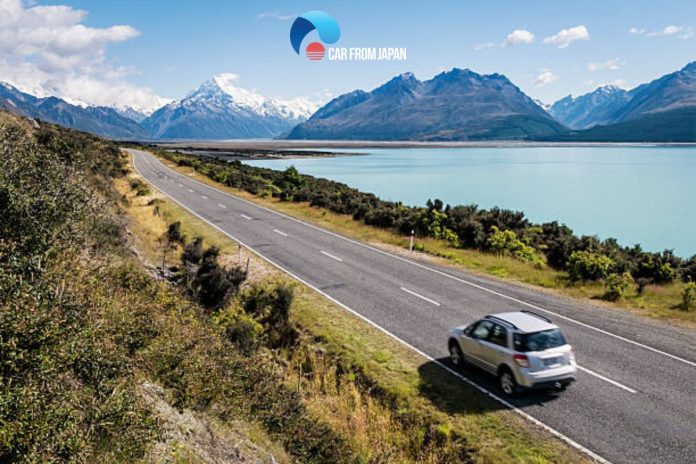Hey there, fellow road adventurers! Road trips can be exciting, but they can pose a danger due to snoozing or fatigue while driving continuously without a break. How can we keep the journey enjoyable and safe? The answer lies in knowing when to hit the brakes – literally. So, let’s buckle up and find out how frequently should you take breaks when driving long distances.
Contents
Why Should We Take Breaks While Driving Long Hauls?
Do you know that those spending long hours driving every day face dangerous risks, which are not only health-related risks but also safety problems for drivers and other people? And taking breaks while driving long distances is a necessary thing to do to get the best possible condition for the journey. It isn’t just about comfort; it’s a crucial safety measure. Here’s why:
Prevent microsleeps
It’s the most important reason for taking breaks while driving. You may think that concentrating so much on driving can prevent you from drifting off to sleep, but it can’t happen. Driving many hours continuously can easily cause falling asleep, which can lead to serious consequences.
It is estimated that 1 in 25 drivers nod off at the wheel at least once in their lifetime. According to the US National Highway Traffic Safety Administration, every year, there are about 72,000 traffic accidents caused by drowsy driving, resulting in about 800 deaths and up to 44,000 injuries. So taking breaks is worth it.

Reduce the risk of back and neck pain
Sitting stationary in the same seat for hours on end can distort the natural curves of the spine, which can cause muscles in your back and neck to become strained. So taking a break can help drivers loosen up their joints and stretch their backs, reducing the risk of pain and fatigue.
Improve concentration
Stepping away from the wheel and getting out of your vehicle can allow you to get some fresh air and help your mind rest and refocus. This improves your concentration and alertness when you get back on the road.
Think of breaks as an investment in your safety and well-being. They’re not a luxury; they’re a necessity for responsible and enjoyable long-distance driving. But when driving on long trips, how often should you plan to stop and take a break?
How Frequently Should You Take Breaks When Driving Long Distances?
How long can you drive a car continuously? Most vehicles can drive for 8 to 9 hours before the fuel needs to be refilled, and make sure to keep a well-maintained vehicle. However, we shouldn’t drive these long hours without breaks.
Ideally, drivers should take a 15-20 minute break after about 2 hours of driving or 200km to recharge their energy. However, these numbers are just for reference; it’s very important to listen to your body’s signals. Let’s take a break when you notice the symptoms in your body below:
- Yawning and heavy eyelids: Your body’s natural way of telling you it’s tired.
- Difficulty focusing: Wandering thoughts and trouble staying in your lane are red flags.
- Restlessness and fidgeting: Your body’s attempt to combat fatigue.
- Headaches and muscle tension: Stress and fatigue can manifest physically.
Please don’t just pull over and scroll through your phone, let’s make use of most of the breaks to stretch your legs, move, and get some fresh air…
Although increasing the number of breaks can delay your planned time of reaching the destination, driving a car over a long distance requires the driver to always be highly focused, which can lead to dreary and fatigue, and short breaks to eat or clean up are very necessary to ensure safety while on the road.
Taking breaks while driving long journeys not only helps to boost your energy but also prevents the car from overworking. Driving continuously can make the car engine overheat and damage so a 15-minute break allows the engine and other parts to cool down.

Beyond the Breaks: When Driving On A Long Trip, You Should?
If you plan on taking a road trip, whether it is by yourself or with a group of friends, these are some simple tips that will make the entire experience a lot more enjoyable, besides taking breaks:
Choose the route and stay on track
Planning and choosing a route will help drivers master the journey. Drivers should choose to travel on easy, safe roads with many people or vehicles to avoid dangerous situations and find help in case of unexpected incidents.
Have a good health
The driver’s health greatly affects the safety of the trip. When the health is not guaranteed or the mind is not comfortable, the driver is likely to lose concentration. At this time, driving a car for a long distance is not recommended. In case the driver is moving and has psychological or health problems, he should stop and park the car in a safe place.
Vehicle inspection
Before setting off, the entire vehicle should be checked to ensure that all systems are operating normally. From the engine, gasoline, horn, and brakes to the air conditioning system, mirrors, windows, lights, tire pressure, and traction… all need to be thoroughly checked. A car with good “health” will help the driver have a smooth, convenient, and safe journey.
Spare tire and repair kit
Spare tire and repair kits will be a great help for drivers if they encounter problems while traveling long distances, especially in remote areas, far from repair centers. Thanks to the prepared tool kit, drivers can change a tire themselves in case of tire problems without affecting the trip.
Mastering the speed when driving a car
When driving long distances, the driver should maintain a stable speed of the vehicle, and should not increase or decrease the speed suddenly, to help limit the feeling of fatigue for the people sitting in the cabin.
In addition, when moving through slippery roads or in stormy weather conditions, the driver should reduce at least 10 km/h compared to the maximum speed prescribed for the road section to limit dangerous situations from occurring.
Keep a safe distance
Ensuring a safe distance helps the driver to proactively handle unexpected situations that may arise. Therefore, the driver should not tailgate the vehicle in front, should not intentionally overtake, and should not drive parallel to other vehicles, especially trucks, tankers, timber trucks, bulky cargo vehicles, etc.
Although the car is equipped with an integrated safety system and many features, it is still impossible for car drivers to avoid unexpected incidents when driving long distances. Therefore, to ensure a safe and smooth trip, drivers need to check their cars and equip themselves with skills and experience for long journeys.
Safety first! Don’t push yourself. If you’re drowsy, pull over immediately. A few extra minutes of rest can make all the difference.



